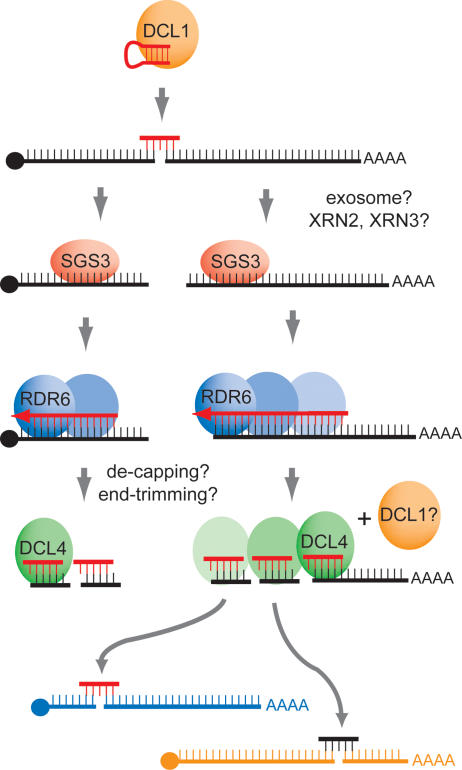Figure 7.
Model for the biogenesis of short siRNAs from TAS2(+) and TAS1a(+). The biogenesis of short siRNAs is initiated by cleavage of these transcripts by miR173. This event produces fragments that are protected from degradation by SGS3 and are subsequently transcribed by RDR6. The resulting double-stranded fragments are then cleaved into small siRNAs by DCL4 and possibly DCL1, starting at the end of the fragment. Some of these small siRNAs function as ta-siRNAs. The 3′ fragment is particularly susceptible to DCL4 because transcription by RDR6 frequently terminates at the miR173 cleavage site, yielding a duplex end. The 5′ fragment is less susceptible to DCL4 because transcription frequently begins internal to the 3′ end of this fragment, leaving a single-stranded end. Cleavage from the 5′ end of this fragment is inhibited by the 5′ cap.

